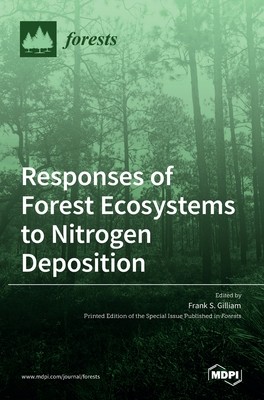
- We will send in 10–14 business days.
- Publisher: MDPI AG
- ISBN-10: 3036520473
- ISBN-13: 9783036520476
- Format: 17 x 24.4 x 1.6 cm, hardcover
- Language: English
- SAVE -10% with code: EXTRA
Responses of Forest Ecosystems to Nitrogen Deposition (e-book) (used book) | bookbook.eu
Reviews
Description
Despite effective global-scale legislation to restrict the emissions of nitrogen (N) into the atmosphere, atmospheric deposition of N remains high in many forested regions. In addition, many N-impacted forests still retain the imprint of N saturation, such as altered species composition and leaching of essential base cations. Accordingly, we need a further understanding of the complexities of N cycling in forest ecosystems and the effects of excess N on forest biodiversity and biogeochemical cycling. This volume explores these complexities, including effects on plants, plant assemblages, and forest biogeochemistry, by synthesizing research from Asia, Europe, and North America. Because of the widespread nature of current declines in N deposition, this book ends with a look to the future as N-impacted forests experience a return to lower levels of atmospheric deposition of N.
EXTRA 10 % discount with code: EXTRA
The promotion ends in 17d.01:49:16
The discount code is valid when purchasing from 10 €. Discounts do not stack.
- Publisher: MDPI AG
- ISBN-10: 3036520473
- ISBN-13: 9783036520476
- Format: 17 x 24.4 x 1.6 cm, hardcover
- Language: English English
Despite effective global-scale legislation to restrict the emissions of nitrogen (N) into the atmosphere, atmospheric deposition of N remains high in many forested regions. In addition, many N-impacted forests still retain the imprint of N saturation, such as altered species composition and leaching of essential base cations. Accordingly, we need a further understanding of the complexities of N cycling in forest ecosystems and the effects of excess N on forest biodiversity and biogeochemical cycling. This volume explores these complexities, including effects on plants, plant assemblages, and forest biogeochemistry, by synthesizing research from Asia, Europe, and North America. Because of the widespread nature of current declines in N deposition, this book ends with a look to the future as N-impacted forests experience a return to lower levels of atmospheric deposition of N.


Reviews